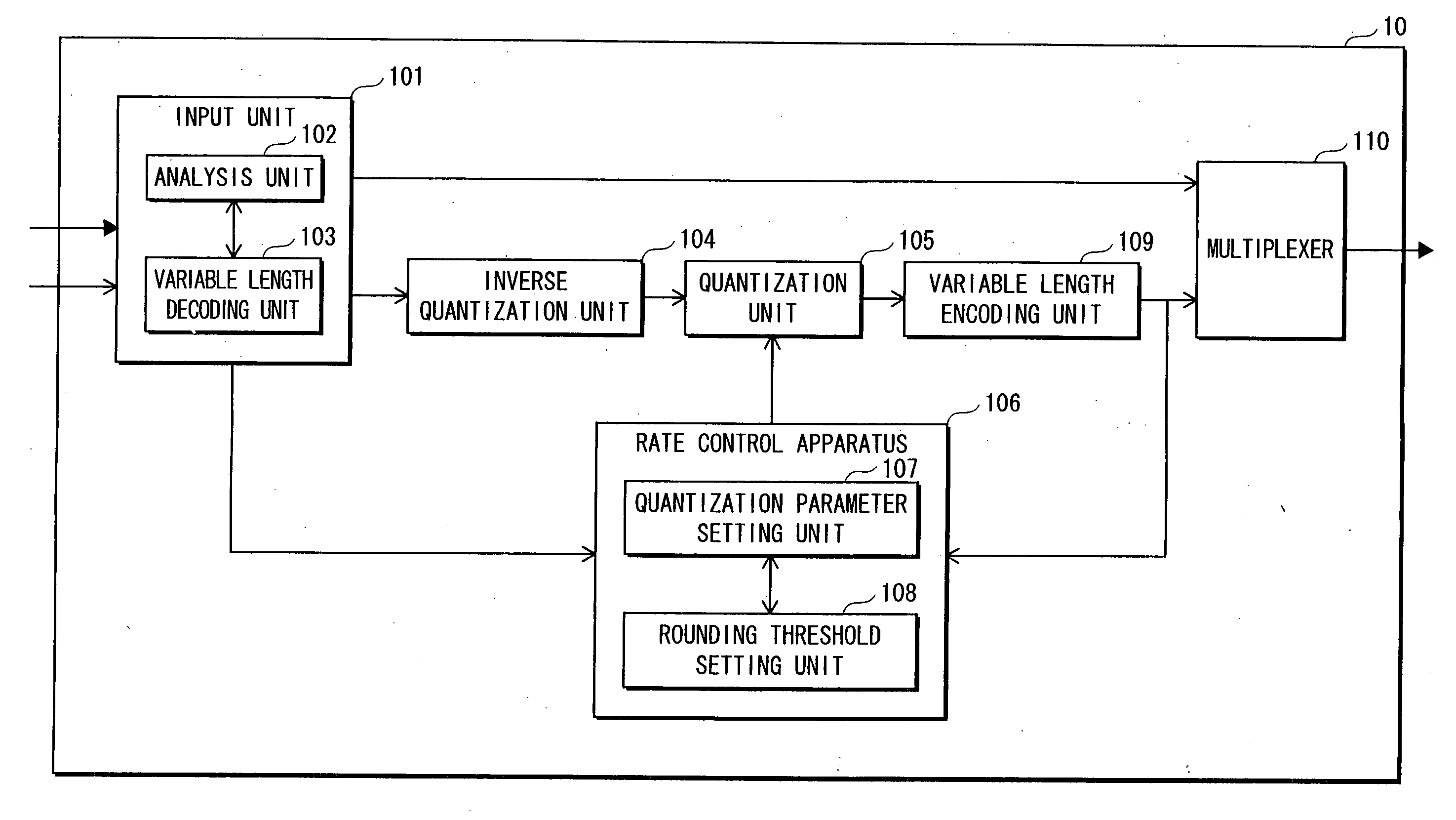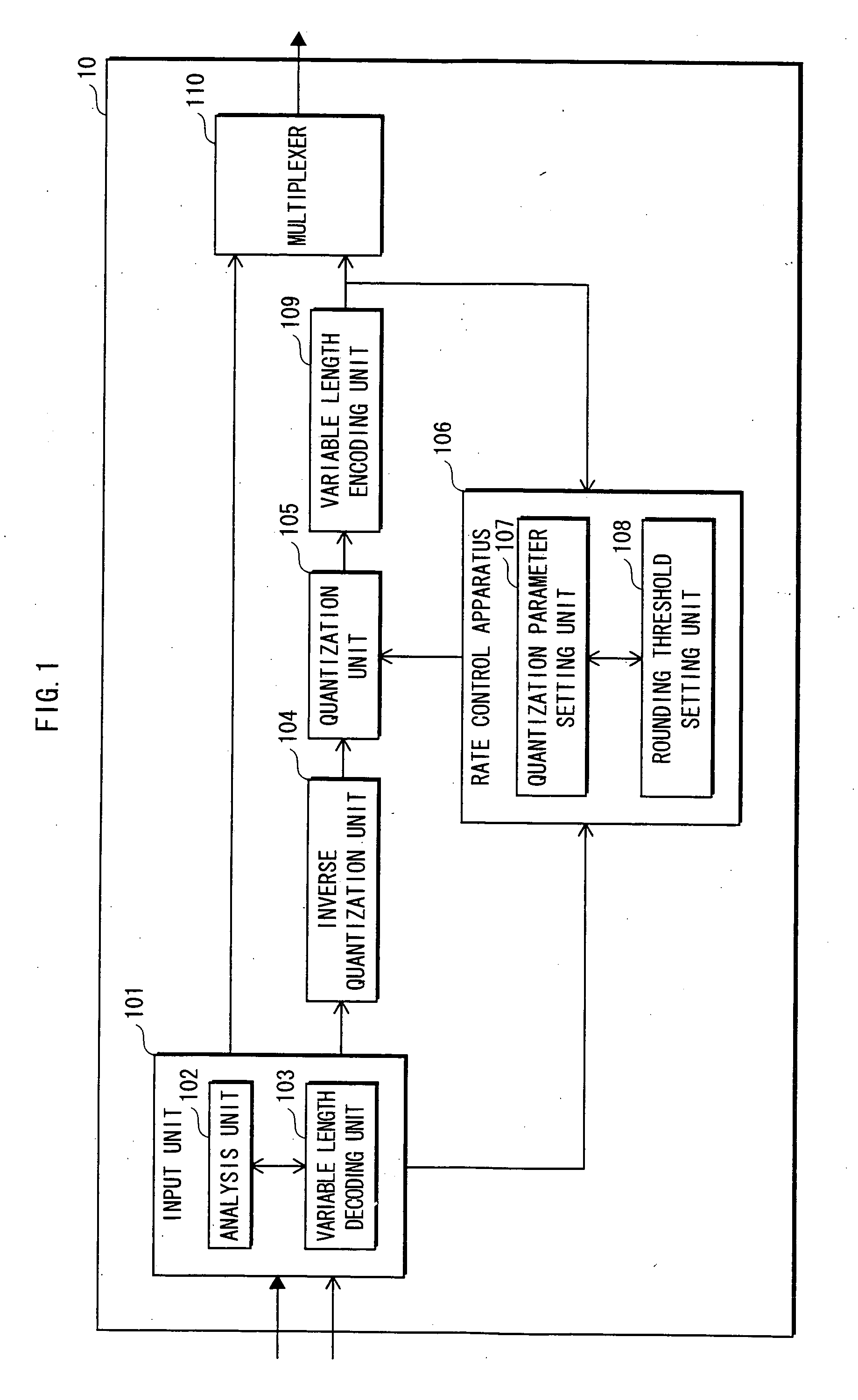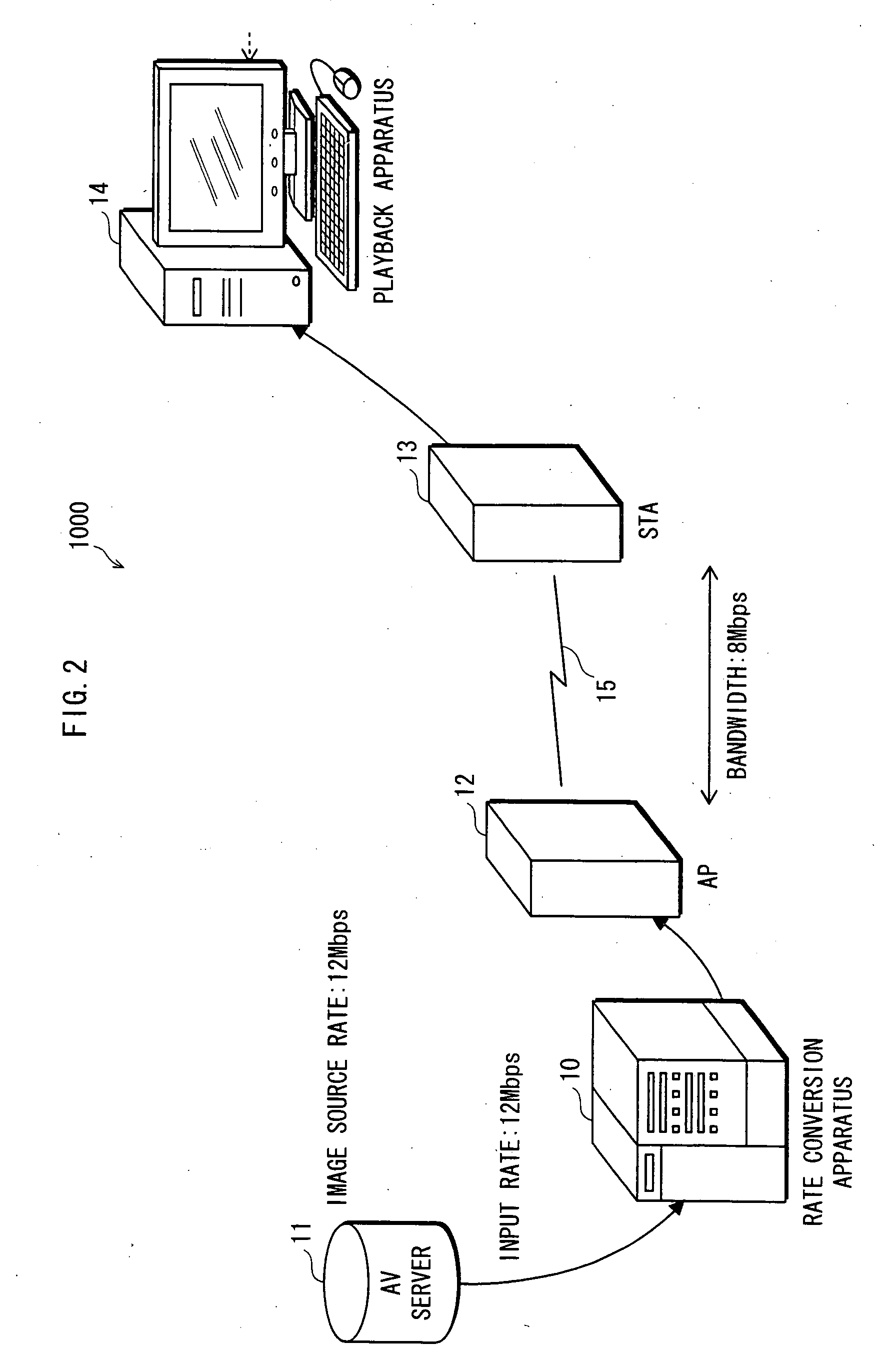Image conversion apparatus
a conversion apparatus and image technology, applied in the field of image conversion apparatus, can solve the problems of image distortion, difficult control of output at the target code amount, and the value after the decimal point, so as to reduce the deterioration of picture quality
- Summary
- Abstract
- Description
- Claims
- Application Information
AI Technical Summary
Benefits of technology
Problems solved by technology
Method used
Image
Examples
first embodiment
1. FIRST EMBODIMENT
[0073] The following describes a rate conversion apparatus 10 as a first embodiment of the present invention with reference to the drawings.
[0074]FIG. 1 is a block diagram showing the structure of the rate conversion apparatus 10. As shown in FIG. 1, the rate conversion apparatus 10 is composed of an input unit 101, an inverse quantization unit 104, a quantization unit 105, a rate control unit 106, a variable length encoding unit 109 and a multiplexer 110. The input unit 101 has an analysis unit 102 and a variable length decoding unit 103, and the rate control unit 106 has a quantization parameter setting unit 107 and a rounding threshold value setting unit 108. The rate conversion apparatus 10 is composed, specifically, of a microprocessor, a ROM, a RAM and the like.
[0075] The rate conversion apparatus 10 has functions of converting the bit rate of an input image, and outputting an output image at an output rate that differs to the input rate.
[0076] The follow...
second embodiment
2. SECOND EMBODIMENT
[0181] The following describes a rate conversion apparatus that is a second embodiment of the present invention.
Structure
[0182] The structure of the rate conversion apparatus of the second embodiment is not illustrated.
[0183] As with the rate conversion apparatus 10 shown in FIG. 1, the rate conversion apparatus of the second embodiment is composed of an input unit, an inverse quantization unit, a quantization unit, a rate control unit, a variable length encoding unit and a multiplexer. The input unit includes an analysis unit and a variable length decoding unit, and the rate control unit includes a quantization parameter setting unit and a rounding threshold value setting unit.
[0184] Whereas “0.5” and “1” were used selectively as the rounding threshold value in re-quantization processing in the first embodiment, in the second embodiment, the rounding threshold value setting unit stores rounding threshold value candidate information 160 composed of “0.5”, “0....
third embodiment
3. THIRD EMBODIMENT
[0200] The following describes a rate conversion apparatus that is a third embodiment of the present invention.
Structure
[0201] The structure of the rate conversion apparatus of the third embodiment is not illustrated.
[0202] As with the rate conversion apparatus 10 shown in FIG. 1, the rate conversion apparatus of the third embodiment is composed of an input unit, an inverse quantization unit, a quantization unit, a rate control unit, a variable length encoding unit and a multiplexer. The input unit includes an analysis unit and a variable length decoding unit, and the rate control unit includes a quantization parameter setting unit and a rounding threshold value setting unit.
[0203] The rate conversion apparatuses of the first and second embodiment use a quantization scale as the quantization parameter. In other words, rate conversion processing is performed by changing the first quantization scale Q_scale1 to the second quantization scale Q_scale2. In contrast...
PUM
 Login to View More
Login to View More Abstract
Description
Claims
Application Information
 Login to View More
Login to View More - R&D
- Intellectual Property
- Life Sciences
- Materials
- Tech Scout
- Unparalleled Data Quality
- Higher Quality Content
- 60% Fewer Hallucinations
Browse by: Latest US Patents, China's latest patents, Technical Efficacy Thesaurus, Application Domain, Technology Topic, Popular Technical Reports.
© 2025 PatSnap. All rights reserved.Legal|Privacy policy|Modern Slavery Act Transparency Statement|Sitemap|About US| Contact US: help@patsnap.com



